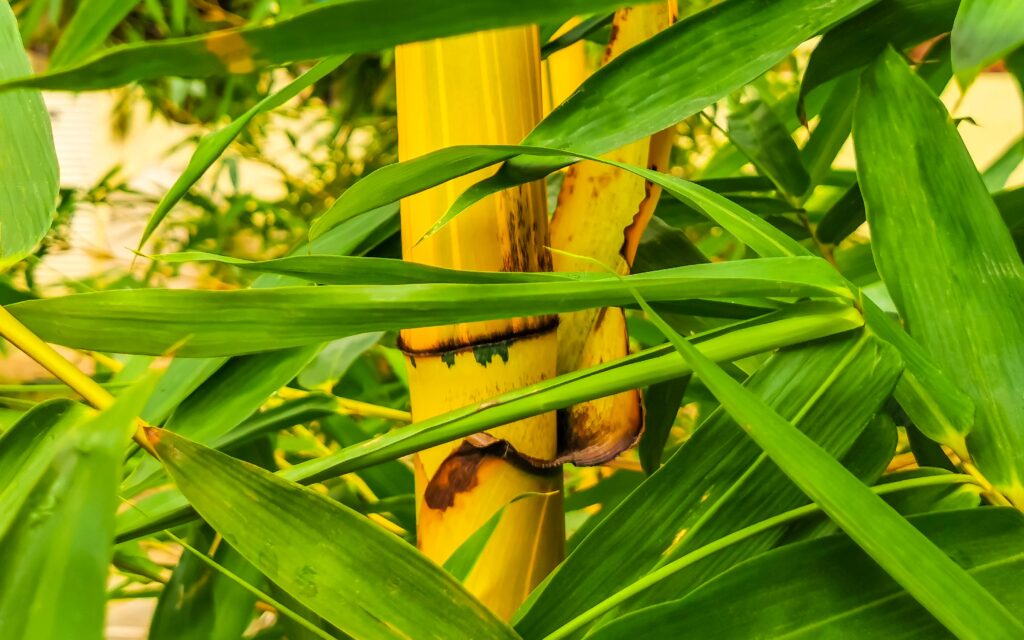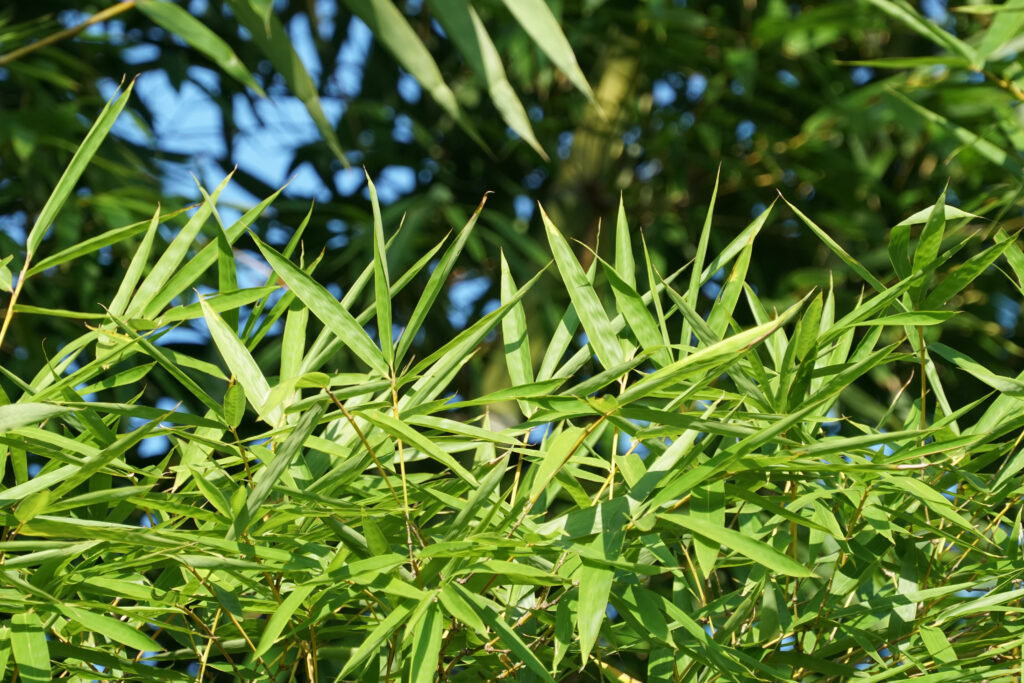There are many plants that can be taken from their native environments and brought inside. Many of these come from tropical environments where year-round temperatures match the range of the average climate-controlled household. Oftentimes, these plants remain smaller in size than they would outdoors. With such a long list of tropical houseplants to choose from, you may have wondered whether you can grow bamboo indoors as well.
Can You Grow Bamboo Indoors?
The short answer? Yes. However, bamboo plants grown in containers will require more maintenance than those grown outdoors. They need a lot of moisture and space to grow, and while it may take less water to saturate a pot of soil, you will need to water them more frequently. You also run the risk of your bamboo becoming root-bound if its rhizomes are not pruned and divided at regular intervals — at least once, if not twice a year. Thinning out culm growth seasonally can help slow down rhizome growth and extend the length of time required between pruning.
Because of the way that bamboo plants grow, they are really best planted outdoors. They thrive in spaces where they are able to stretch their rhizomes outward through the soil and reach upward toward the sun.
Commonly available houseplants like lucky bamboo and parlor palm are often mistaken for true bamboo and the resemblance can be remarkable. These plants and others can be used to create a similar atmosphere and are significantly better suited to growing indoors. However, if outdoor space is limited and you’re dead set on planting this type of grass, there are some varieties of bamboo that can tolerate the conditions of indoor living.
3 Bamboo Plants to Try Indoors
If you’re aiming to grow true bamboo (not Lucky Bamboo) indoors, you will likely have the best success with dwarf varieties and those that prefer shadier environments. While most species can be grown inside with enough attention, the following few species will generally require less maintenance.
Chusquea sulcata
This cultivar is a clumping-type bamboo that originates from Mexico. Its fairly narrow, 1-inch-diameter, green and yellow culms can grow up to 15 feet in height, but will likely stay shorter than this when planted in a container. Leaves of this species can measure up to 5 inches long and are carried on bushy whorls of branches that emerge from each node. Culms may also be topped before branches form in order to keep them shorter and encourage a bushier growth habit.
C. sulcata prefers partial sun conditions and should be placed near a window where it can receive bright, direct sunlight for at least half the day. A breeze from an open window is beneficial in helping keep air from becoming stagnant. Humid air that remains stagnant for too long can encourage mildew and pest infections.

is a clumping-type bamboo that originates from Mexico. If grown indoors, it requires direct sunlight for half of the day.
©Arkadij Schell/Shutterstock.com
Dwarf Whitestripe (Pleioblastus fortunei)
Dwarf whitestripe is a cultivar of running bamboo that is commonly used as a ground cover plant outdoors. Its diminutive size and beautiful variegated leaves, as well as its preference for shade, make it a good candidate for an indoor plant.
This dwarf variety only reaches between two and three feet in height in the best conditions, and will often remain about a foot tall. It tolerates culm trimming well. Because the white and green striped leaves tend to be so long relative to the height of the plant, they do a good job at completely filling out wide pots.
Indoors, this bamboo should be allowed only three to four hours of sunlight per day for best growth. As it is a running bamboo, rhizome divisions will likely need to be made frequently. This rate can depend upon the size of the pot and the happiness of the plant, but is usually done once or twice per year. If soil conditions are to the plant’s liking, meaning nutritive, slightly acidic, and well-draining, divisions may need to be made more frequently than that in order to prevent root binding.

Dwarf whitestripe bamboo is commonly used as a ground cover plant outdoors but can be grown indoors, too.
©Toibkk/Shutterstock.com
Bambusa multiplex ‘Tiny Fern’
This clumping hedge bamboo is very accepting of branch and culm pruning and is a good option for container planting. In the wild, culms of this species commonly reach heights of 25 feet or more. This cultivar, however, tends to cap out at around 3 feet in height. Its popularity as hedge bamboo is owed to its leaf density and tolerance to shaping, which lends the plant stylistic versatility. Leaves are generally presented in a bush-like fashion, but branches can be trimmed away as well to give culms a more top-heavy aesthetic.
‘Tiny Fern’ requires at least a half day of indirect sunlight in order to thrive indoors, and does very well in standard room temperature. Like other bamboo plants, its soil should always be kept nice and moist. Because watering frequency can vary based on your climate control settings, it is best to water when the first inch or two of soil has dried out. Make sure that your plant’s soil drains well and remember not to overwater. Even though your plant is inside, it is still at risk of root rot.

Bambusa Multiplex or “Tiny Fern” is a type of hedge bamboo that can be grown indoors.
©Doikanoy/Shutterstock.com
The photo featured at the top of this post is © iStock.com/p-orbital
Thank you for reading! Have some feedback for us? Contact the AZ Animals editorial team.







